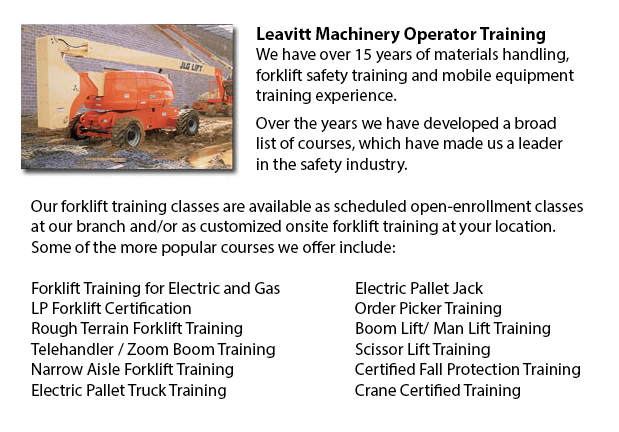
Vancouver Boom Lift Certification - Elevated work platforms allow maintenance operations and work to be performed at levels which could not be reached by any other way. Boom Lift Certification Training educates workers regarding safely operating boom lifts and scissor lifts.
When work platforms are not operated safely, they have the potential for serious injury and even death, regardless of their lift style, application or the site conditions. Falls, electrocution, crushed body parts, and tip-overs can be the unfortunate outcome of wrong operating procedures.
To be able to prevent aerial lift incidents, boom lift operators need to be trained by workers who are qualified in the safe operation of the specific type of aerial lift they will be using. Aerial lifts must not be be modified without the express permission of other recognized entity or the manufacturer. If you are renting a lift, make sure that it is maintained correctly. Prior to using, controls and safety devices have to be checked in order to ensure they are functioning properly.
Operational safety procedures are essential in avoiding incidents. Operators should not drive an aerial lift with the lift extended (even though a few are designed to be driven with the lift extended). Set outriggers, if available. Always set brakes. Avoid slopes, but when required make use of wheel chocks on slopes which do not exceed the slope restrictions of the manufacturer. Adhere to manufacturer's load and weight restrictions. When standing on the boom lift's platform, make use of a safety belt with a two-foot lanyard tied to the basket or boom or a full-body harness. Fall protection is not required for scissor lifts that have guardrails. Do not climb or sit on guardrails.
The boom lift certification course provides instruction in the following fields: safety guidelines to prevent a tip-over; training and certification; surface conditions and slopes; inspecting the travel path & work area; stability factors; other tips for maintaining stability; leverage; weight capacity; testing control functions; pre-operational check; safe operating practices; mounting a vehicle; overhead obstacles and power lines; safe driving procedures; PPE and fall protection; use of harnesses and lanyards; and prevent falling from the platform.
When successful, the trained worker would be familiar with the following: authorization and training procedures; pre-operational inspection procedures; how to prevent tip-overs; factors affecting the stability of boom and scissor lifts; how to use the testing control functions; how to utilize PPE and fall prevention strategies.
-
Telehandler and Zoom Boom Certification in Vancouver
Telescopic handlers usually referred to as telehandlers for short, are an extremely popular piece of heavy construction equipment. They are usually used in the construction and agricultural industries. These equipments have maximum reaching capabilit... More -
Vancouver Telehandler Ticket
Vancouver Telehandler Ticket - A telescopic handler or telehandler is a machine which is commonly utilized in industrial and agricultural applications. It has the same look to a lift truck and even functions in a similar way, although, the telehandle... More -
Vancouver Crane Operator Classes
Vancouver Crane Operator Classes - For the operators and the supervisors, current and new, the crane operator training course is suitable for all. Course content includes relevant federal, provincial and state safety regulations. The first component... More -
Vancouver Crane Training School
Vancouver Crane Training School - The crane training school offers industry-relevant programs. Courses provide trainees with learning results that match existing industry demands. Our small class sizes combine hands-on experience and theory. Our qual... More -
Vancouver Aerial Boom Lift Training
Vancouver Aerial Boom Lift Training - Aerial Boom Lift Training is needed for any individual who supervises, operates or works in the vicinity of boom lifts. This particular type of aerial lift or aerial work platform is for lifting individuals, tool... More -
Narrow Aisle Forklift - Order Picker Training - Electric Pallet Jack - Electric Pallet Truck Certification in Vancouver
A pallet jack is a piece of equipment dedicated in the maneuvering of pallets of many dimensions and weights. They can be used as an attachment for forklifts, cranes and other variations of heavy machinery or be applied on their own. Pallet lifts are... More -
Vancouver Telehandler Operator Training
Vancouver Telehandler Operator Training - Telescopic handler Forklifts or telehandler forklifts are common industrial machines found in numerous construction industry environment. The telehandler is a helpful machine and makes for a valuable device t... More -
Vancouver Manlift Ticket
Vancouver Manlift Ticket - The Manlifts and Elevated Platforms course provides training on the regulations, rules and proper application of safe operating procedures and work practices involved in daily activities for individuals who work with this m... More

Forklift Certification Vancouver
TOLL FREE: 1-888-254-6157
51 Leeder Street
Coquitlam, British Columbia
forkliftcertificationvancouver.com/
Email Us
About Us



